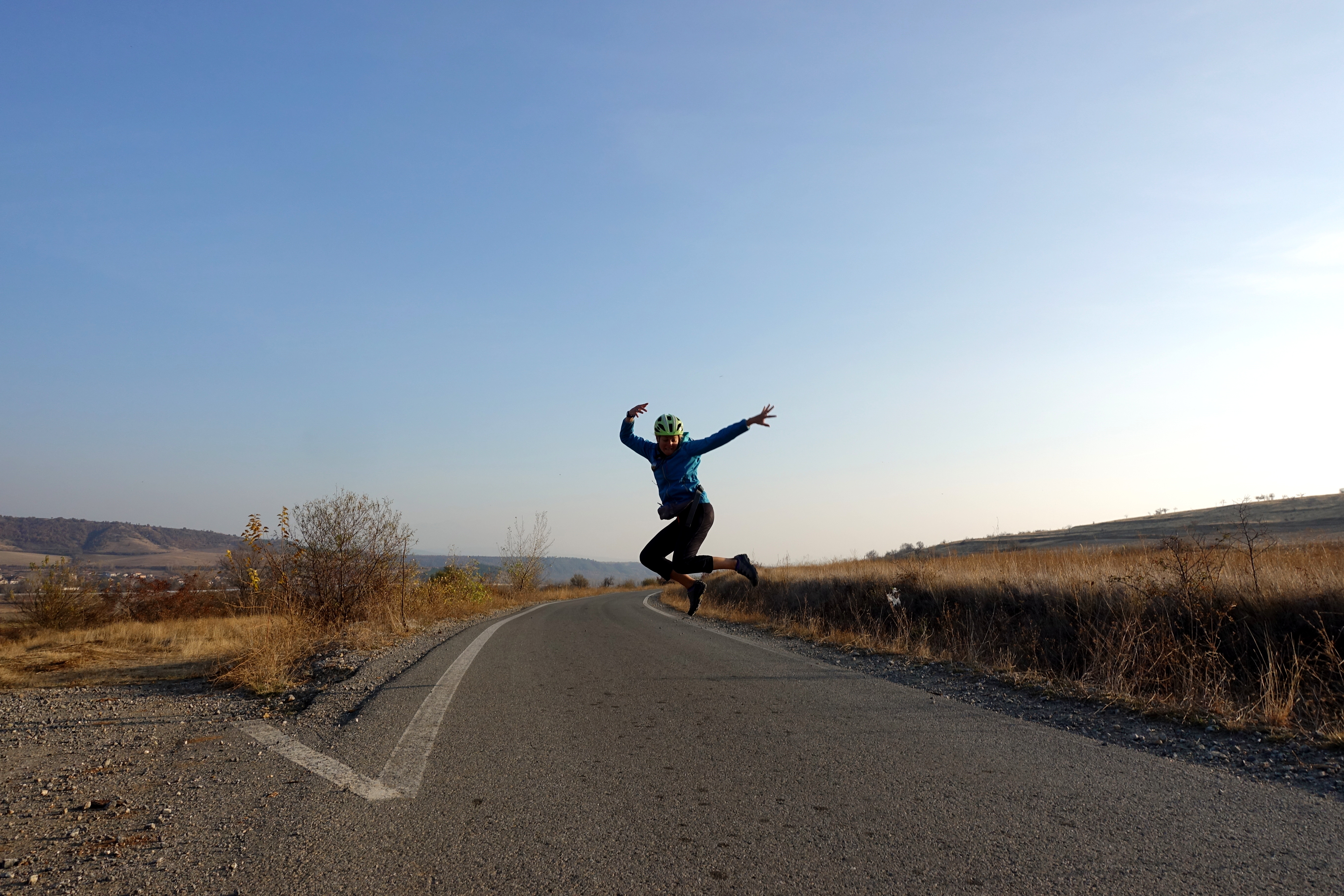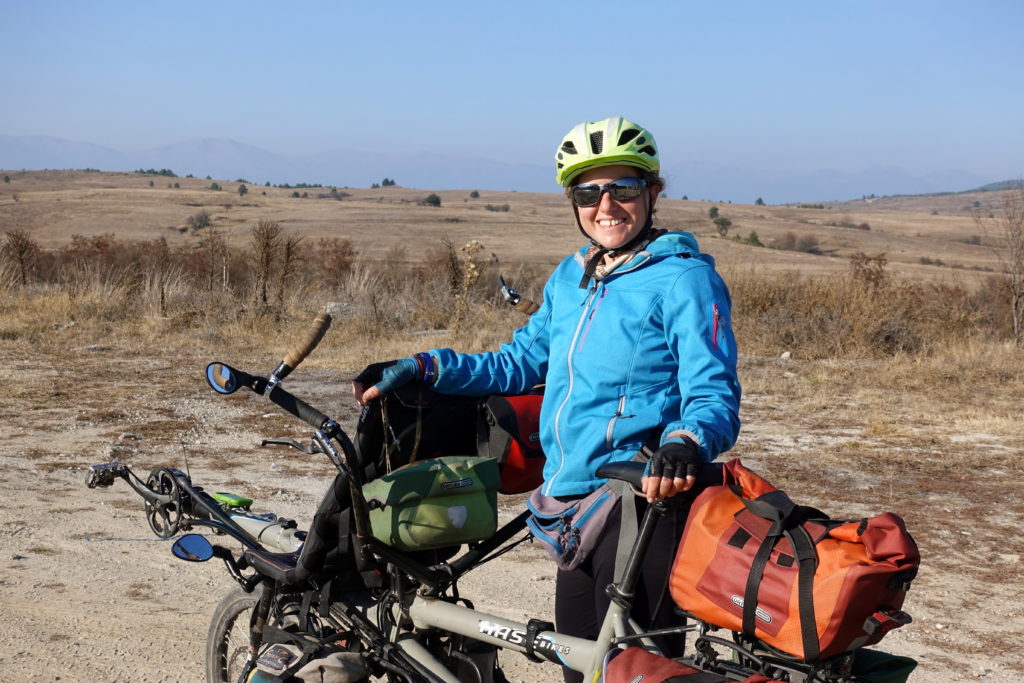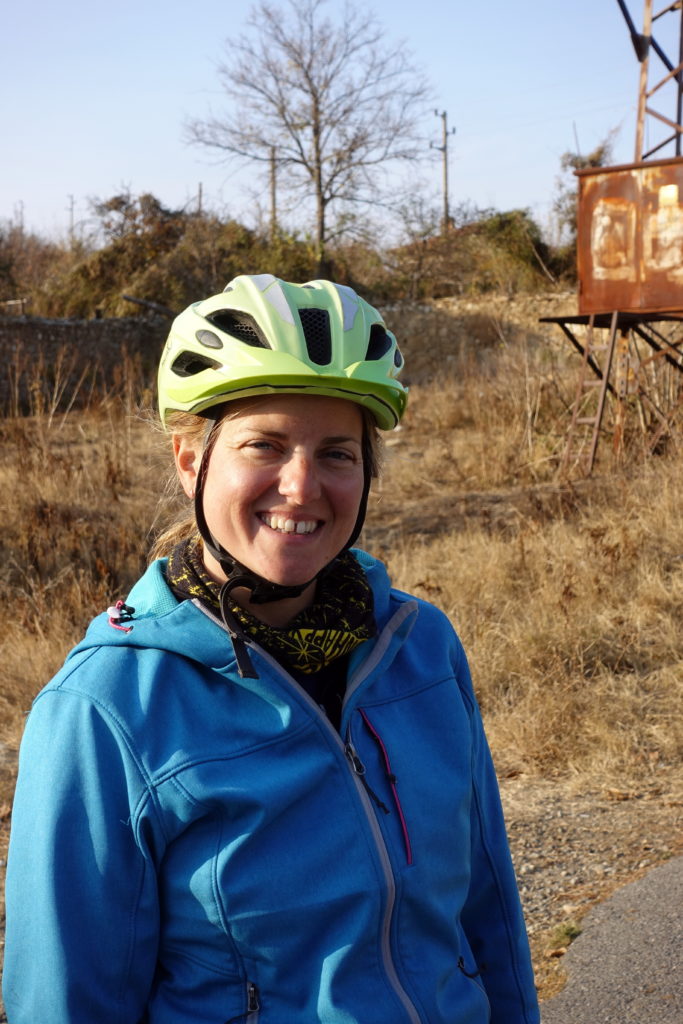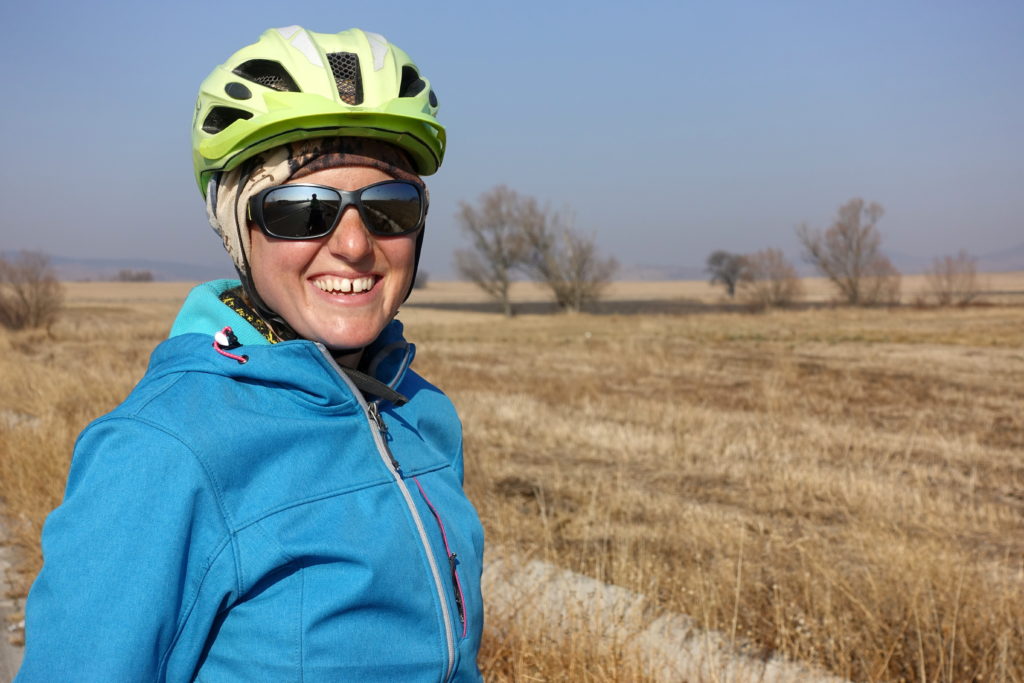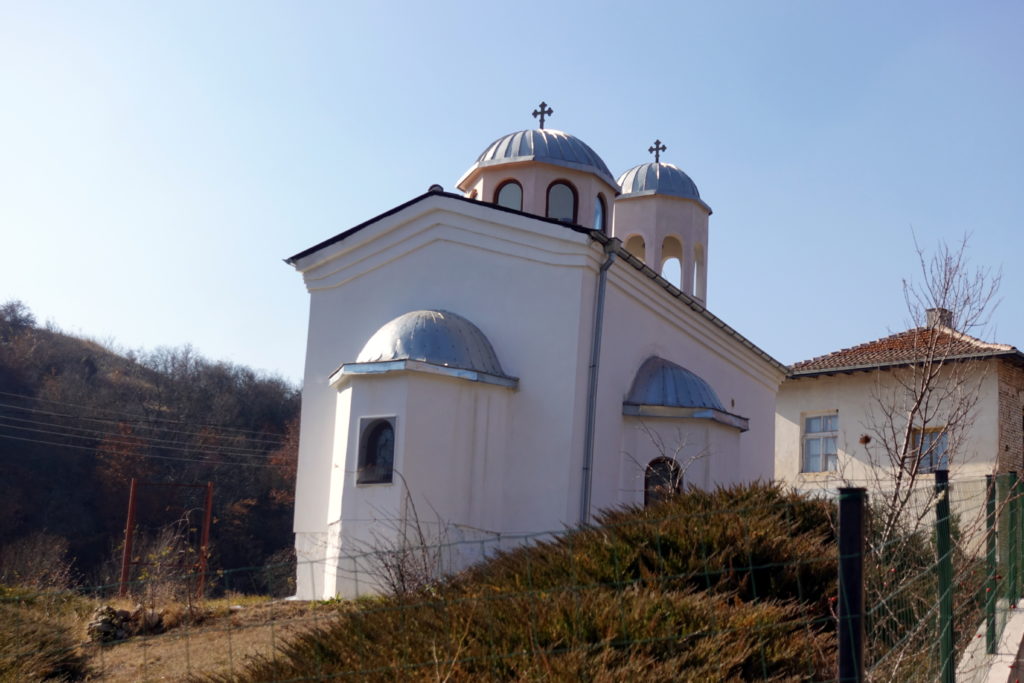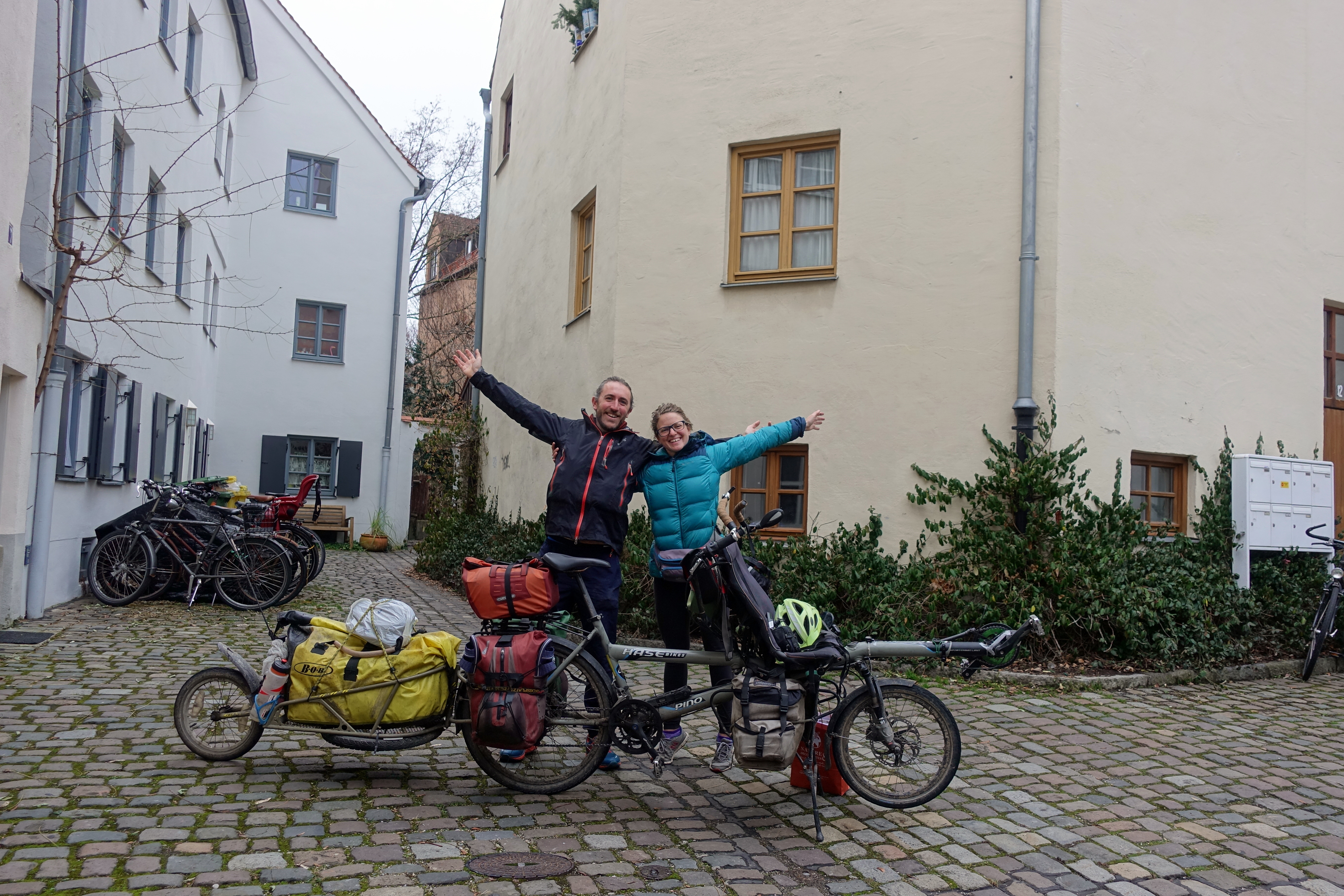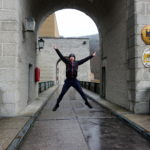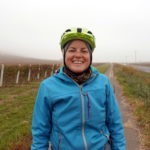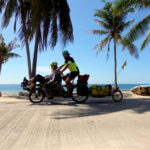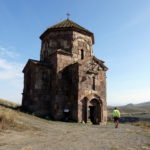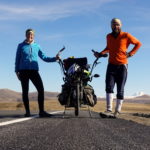Our final night in Greece was pleasant, but chilly. Winter temperatures were slowly taking over autumn and were proving to be a challenge for electric heaters. In the morning, we ate our breakfast in down jackets and then said goodbye to our host as we packed our bike. He was insistent on offering us a steel sculpture of a bicycle (with a frame having only two bars…), but we had to convince him that although it was beautiful, we couldn’t really carry a few more kilograms of steel!
In the mid-morning, we cycled through the city of Drama and collected a few things necessities for our travels (Lidl groceries and contact solution). After we left, we continued down the busy road, sharing it with numerous marble haulers, nothing very interesting on the way, no view over the sea and few archeological sites. However, once we turned towards the border, the traffic eventually thinned out to a trickle, but some marble trucks were still present. The way towards Bulgaria is a never-ending ascent bringing us from sea level to the base of the Balkan Mountains 600m higher. We had an unglamorous picnic lunch on the side of the road due to the narrow valley and then continued our slow climb up towards the border. Cédric and I were surprised to find an actual patrolled border between the two countries since they were a part of the EU – we discovered on the spot that the Schengen Area does not yet comprehend all EU states – link about Europe). Because it was getting close to sunset, and that the border waiting time was not planned, we had to quickly cycle the last 10 kilometers to the nearest hotel racing with the sunset. The problem with cycling in autumn and winter has actually been mostly about the length of the days. We can deal with rain, cold or snow by playing with the number of layers – but finishing 80 hilly kilometers before 4pm is getting increasingly difficult.
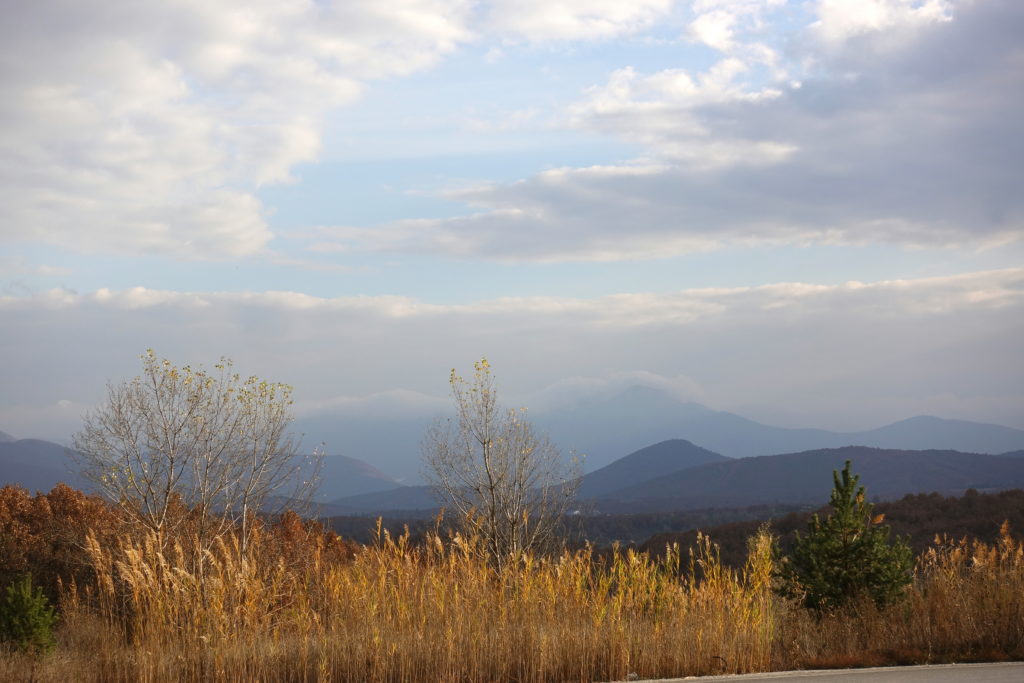

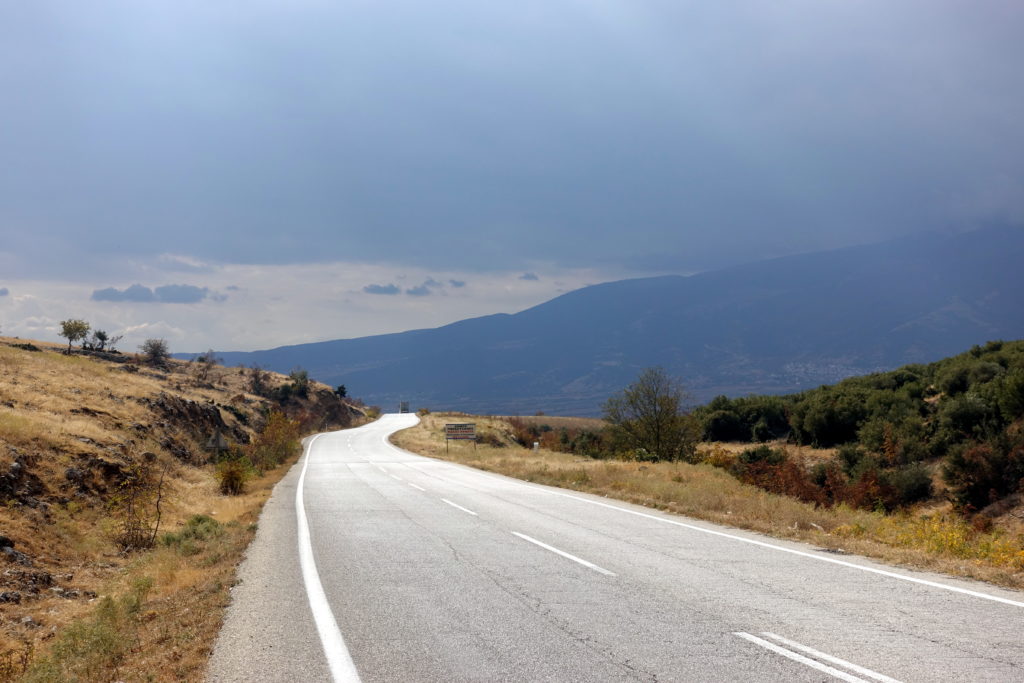

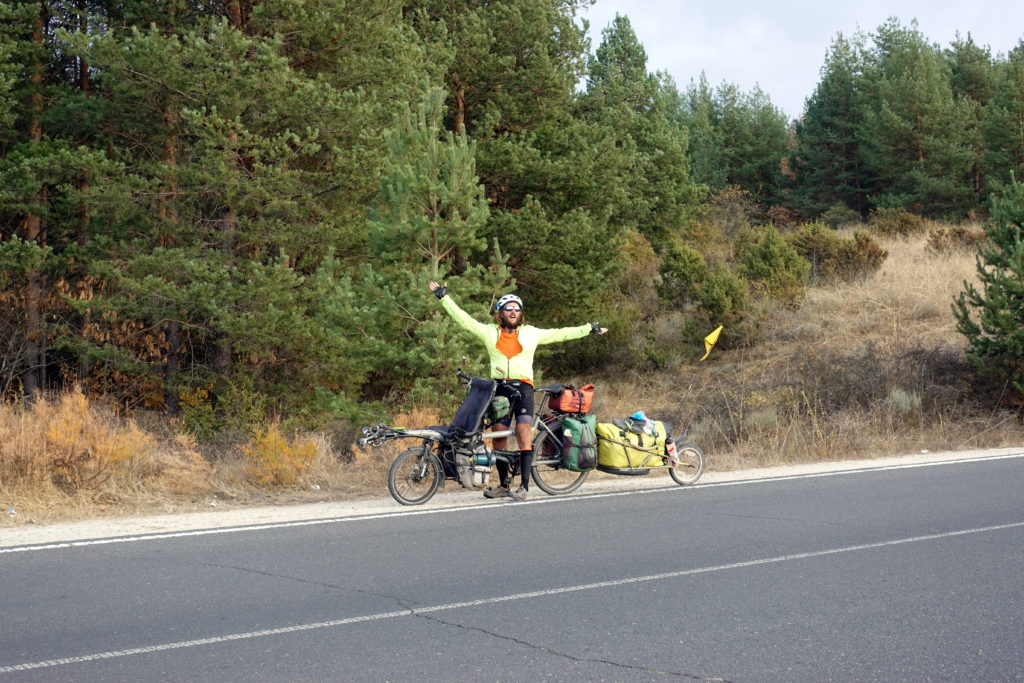
Here again, a mere border crossing unveils stark differences between countries. Greece still felt industrial and modern (comparatively), whereas the first village we passed in Bulgaria looked completely in ruins. Cedric said shortly before the border that the image he had of Bulgaria was being the worst country of anything in any EU country ranking. We were at first surprised by the quality of roads after the border (EU funding…), but we quickly came back to reality at the first village: half of the buildings abandoned, nobody in the streets, not a shop, … We had luckily marked a hotel to spend the night and reached it quickly after getting a few supplies at the gas-station, the only place open in the surroundings. Given Bulgaria’s criminal reputation, and the refusal of the hotel to lock the bike inside, we tried to hide the tandem on the terrace under the tent tarp and got nervous that someone would get interested in our ride – not sure if that was justified, but that was the first time this year. Our bicycle been a little weird, especially with the trailer, we hope that this is helping to repulse any temptations (together with big locks).
The next morning, we were happy to see that our Hase Pino was left untouched overnight. We ate our breakfast in the room and then prepared our bike for the day’s ride. As we started down the road, we noticed that there was significantly more traffic than Greece – and wondered whether this car fanaticism (particularly with German cars – rarely glossy new but the logo is what matters the most apparently) had something to do with the post-Soviet states (Eastern Bloc included). We made a quick stop in Gotse Delchev to get some Bulgarian Lev (we were sad to not use the Euro anymore) and take a peak at the town. A few kilometers down the road, the traffic started thinning out and we began following a river valley. Compared to the day before, we had sunny skies and beautiful views of the hills around us. We continued following the Mesta River valley for most of the day, enjoying the warmth from the sun when we weren’t in the shadows. We were only a few days away from the coast of Greece, but the temperatures were clearly no longer that clement in the mountains, and although the days were enjoyable during the day in the sun, we had to adjust in the morning, the afternoon, or whenever in a deeper valley and shadow. The further up the valley we cycled, the more apparent it became that we were in a ski region, with advertisements about winter getaways lining the roads, and we felt lucky that the weather hadn’t turned snowy yet. In the late afternoon, we reached our hotel in Razlog and were treated to a nice hamburger dinner (grilled meat is still on the menu – hamburgers in south-eastern Europe are usually just ground-meat, without the bread). The region around Razlog seem to be busier in the summer and winter, but at that time of the year we felt like being the only tourists they had seen in days, in towns that were half-empty.
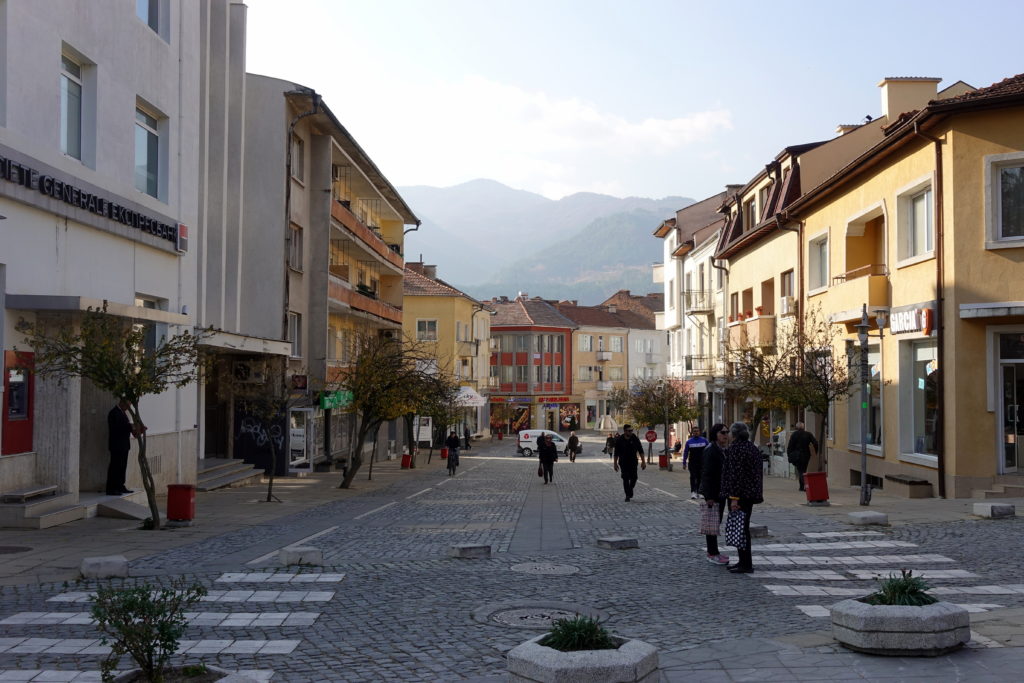
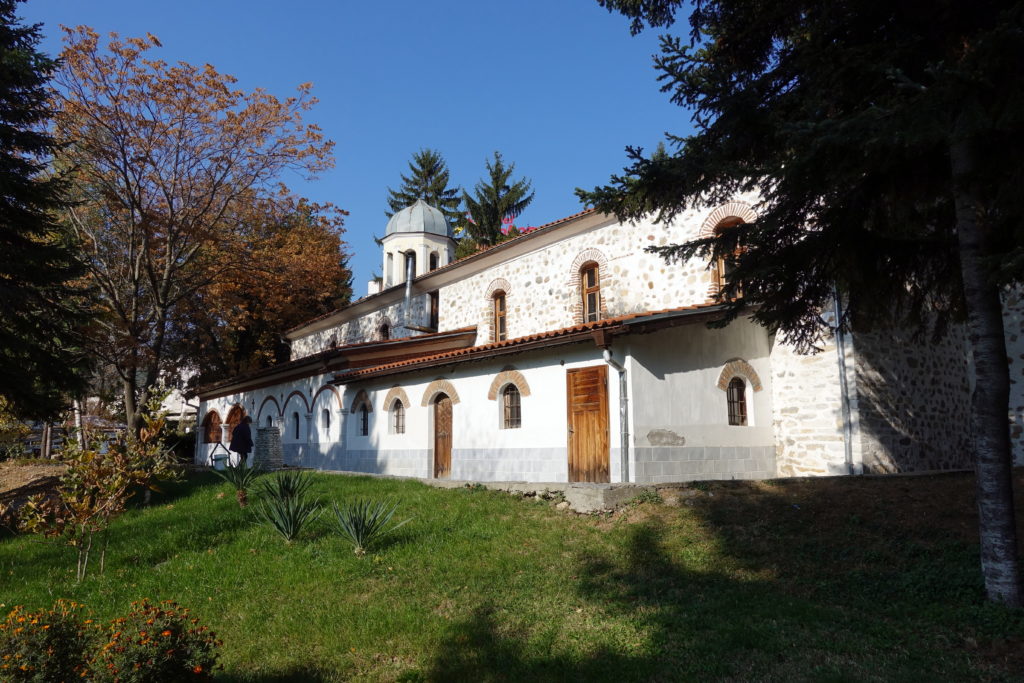
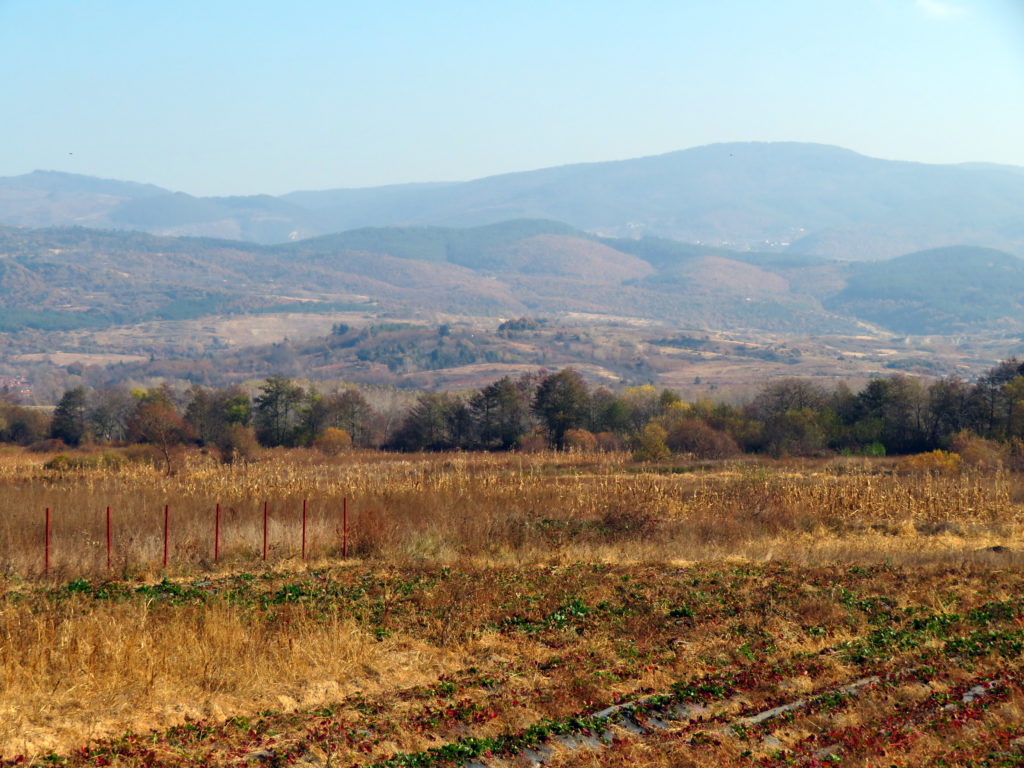

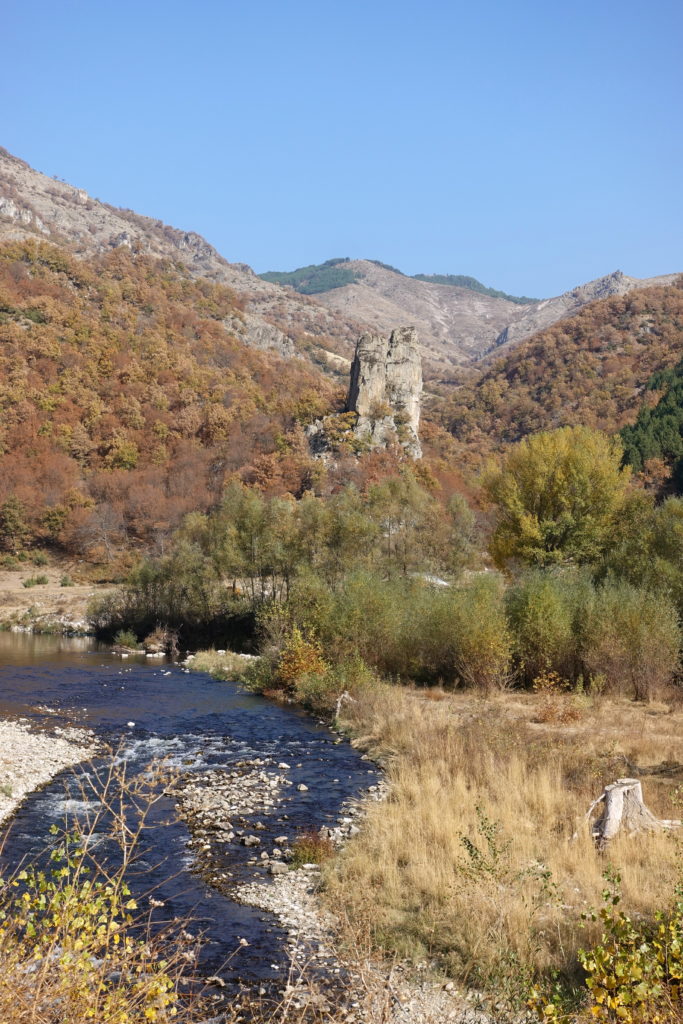
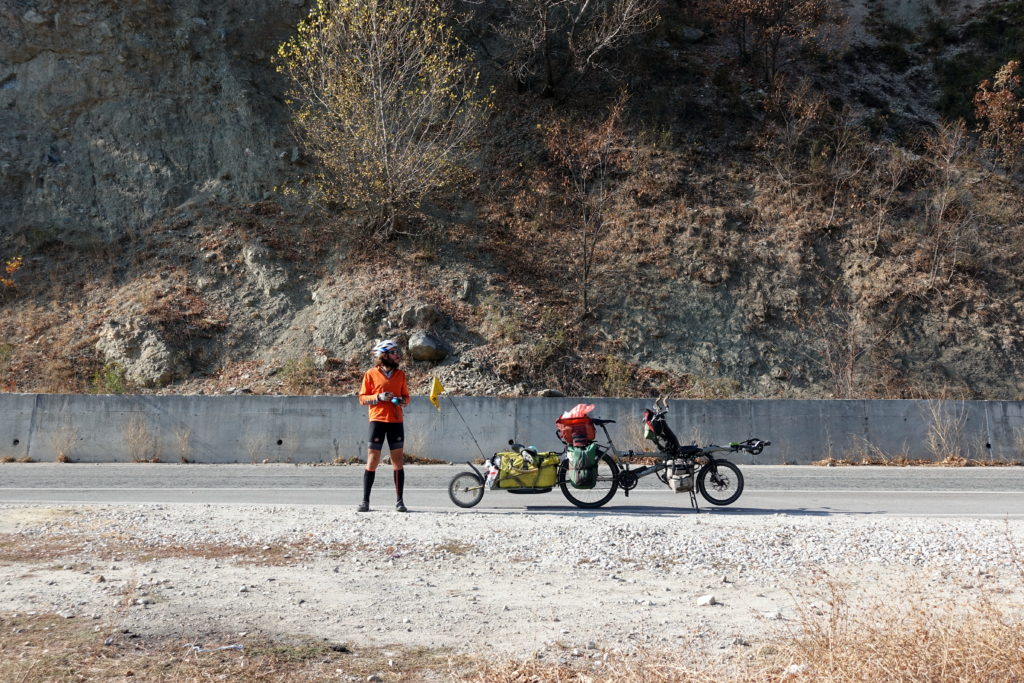

The next day, we continued our journey through the Rila Mountains in the frosty air. We only had to climb a few kilometers in the morning to reach the pass, and given our several layers, we broke out in a sweat once we reached the top. The fast descent down to Simitli in our damp clothes was chilling – and we had to make several stops to warm our extremities. We were hoping to find a café, so we could warm ourselves up, but the town seemed desolate and we decided to continue cycling to the nearest restaurant. Come lunchtime, we came across a Serbian restaurant where I had to plead with the waiter that, no, in fact I did not want grilled meat, even though it was the restaurant’s specialty. This also gave me little hope that Serbia would have a different cuisine. In the afternoon, we continued cycling along the secondary and tertiary roads.


There was a considerable amount of traffic although we were parallel to a main highway and I started wondering what was more practical for cyclists – a road with no shoulders and moderate traffic (and speed) or a highway with ample shoulder and faster speeds. Though we were relieved to see that we weren’t so crazy when a road cyclist passed us (and snapped a picture of Cédric wearing his suspenders on top of his sweater). We had seen much worse traffic and drivers in previous countries, and Bulgaria is not too densely populated so actually not too bad for cycling, but we just don’t fancy too much spending more time looking at other vehicles than just enjoying the views. Towards the end of the day, we followed a quiet country road and ended our day in Boboshevo, another slightly decaying Bulgarian town. At this place, we were excited to have a place to use our camping stove, so we wouldn’t have to eat grilled meat once again.
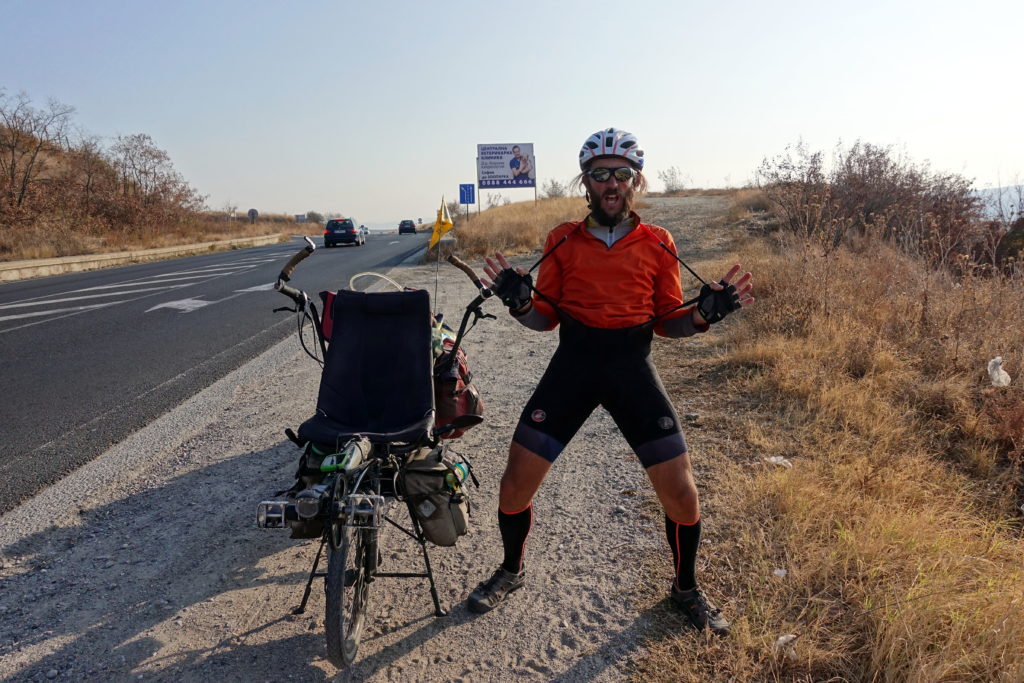

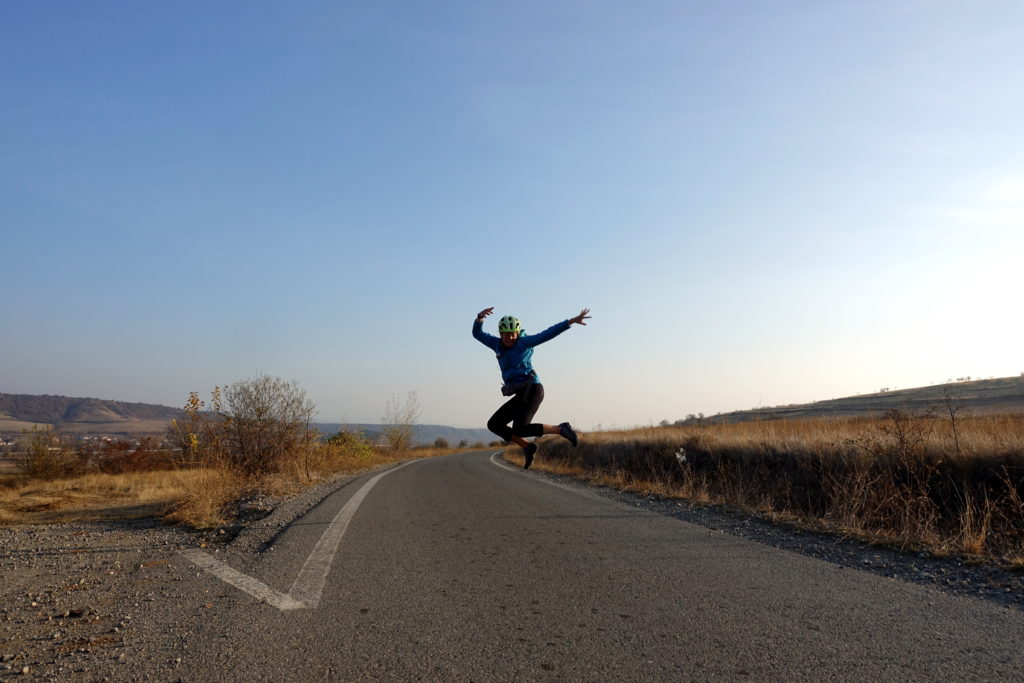
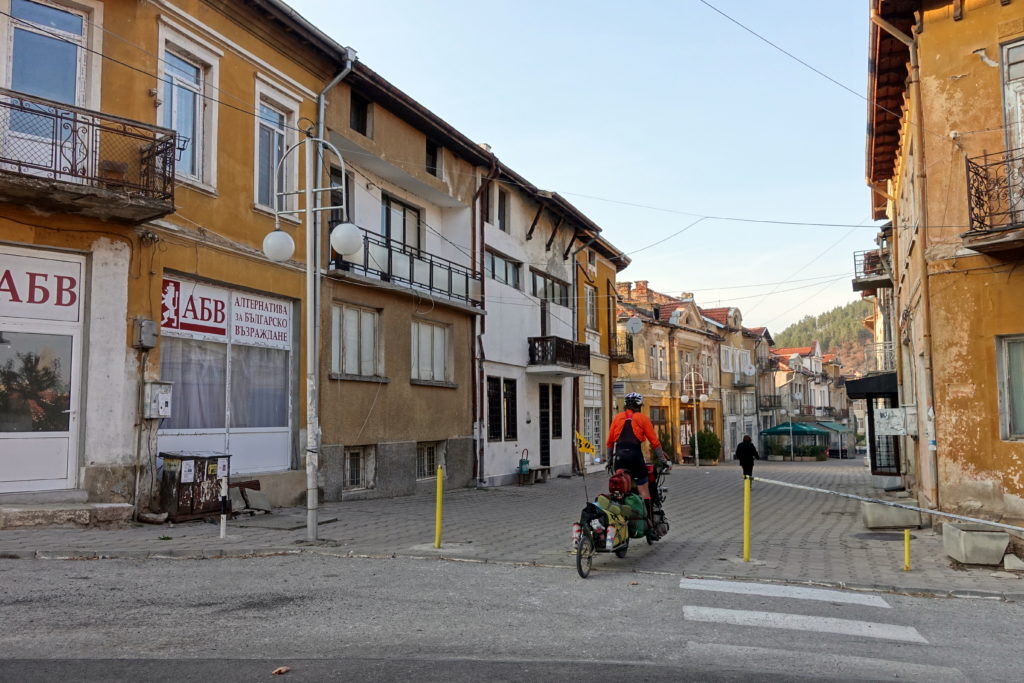
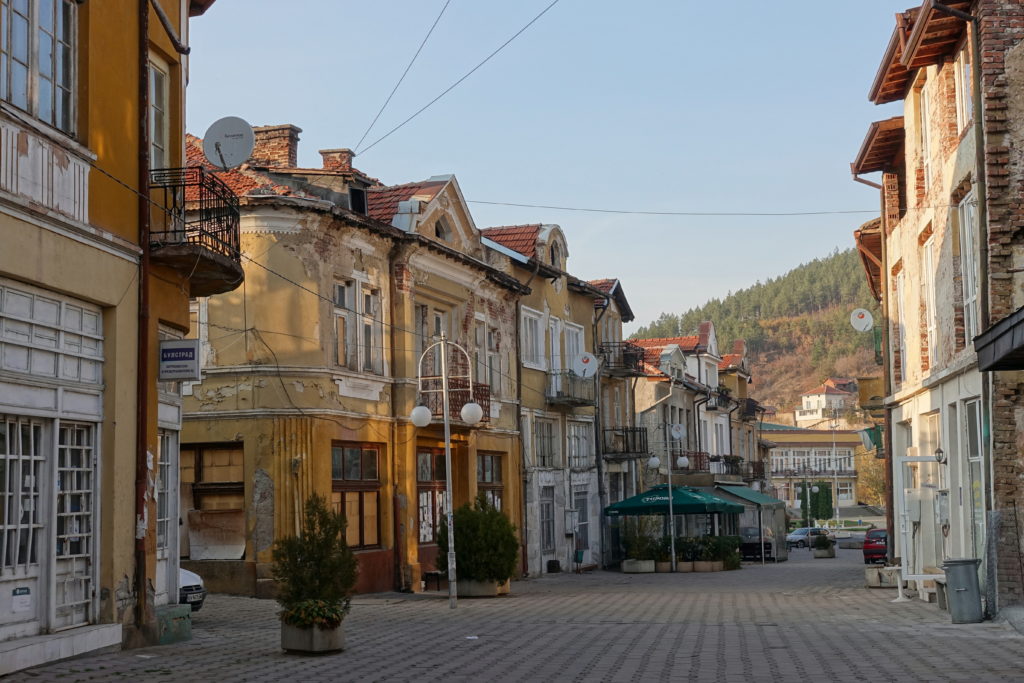
The next morning was still crisp, but not below freezing temperatures like the day before (we were now a few hundred meters lower). Having decided to avoid Sofia, the capital of Bulgaria, due to a not-favorable-enough ratio of inhabitants vs. interesting sights, we set out in the direction of the Serbian border. As we made our way through Dupnitsa, a police blockade (due to fuel price protests) forced us to wind our way through the city streets. After we passed through the city, we also noticed an extremely large number of secondhand car retailers lining the road – all sorts imported from all over the EU. Since the weather was warm and sunny, we had a roadside picnic overlooking a reservoir and the highway below. That afternoon, we cycled along back roads trying our best to stay away from traffic. Shortly before Razlog, we cycled past an abandoned industrial complex a few square kilometers in size. As we passed, we wondered why so many valuable and recyclable materials were left to simply rot and there were no apparent interventions to remediate the land. A quick look into Bulgaria’s waning population and political inaction probably explains why this complex still stands. Bulgaria clearly had a large industry a few decades ago, but whatever the problem in the country could be (demographics, education, politics, emigration etc.), the current economic state is not particularly enviable: we just felt that the only functioning businesses were about the trade of used cars, incidentally surprisingly large – every small village having several parking-retailers selling each tens (hundreds?) of cars…
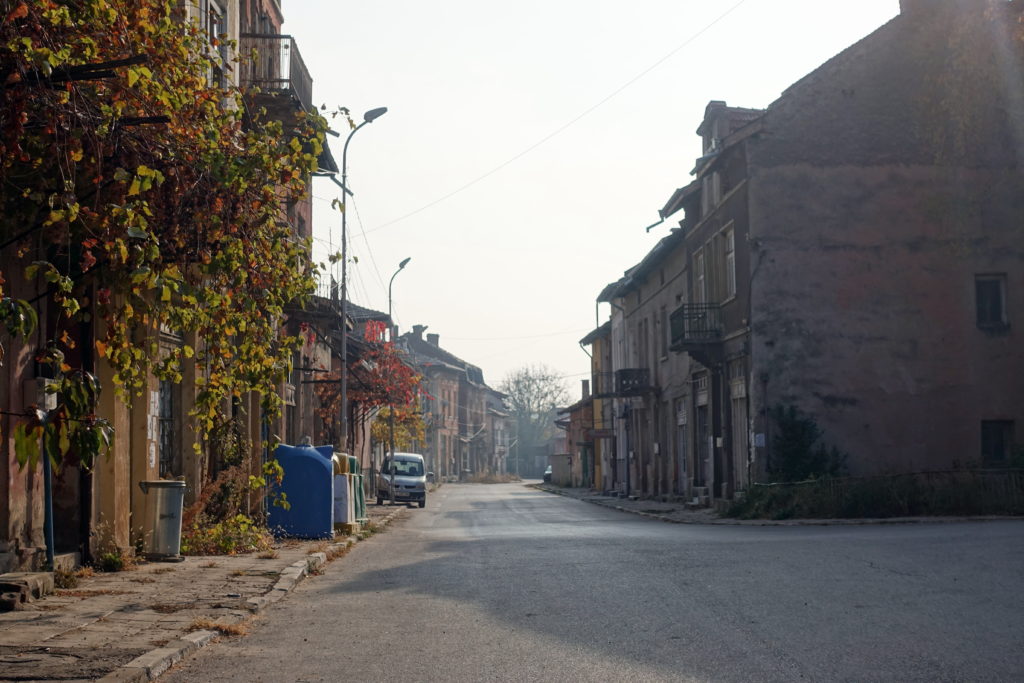

Towards the end of the day, we rejoined a larger road and cycled to Pernik as quickly as possible. For our dinner that night, we decided to opt out of a plate of restaurant-grilled-meat to cook pasta instead. However, without a balcony we attempted to cook our dinner using our stove in the bathroom (it worked perfectly, good to know for the future winter weeks!).
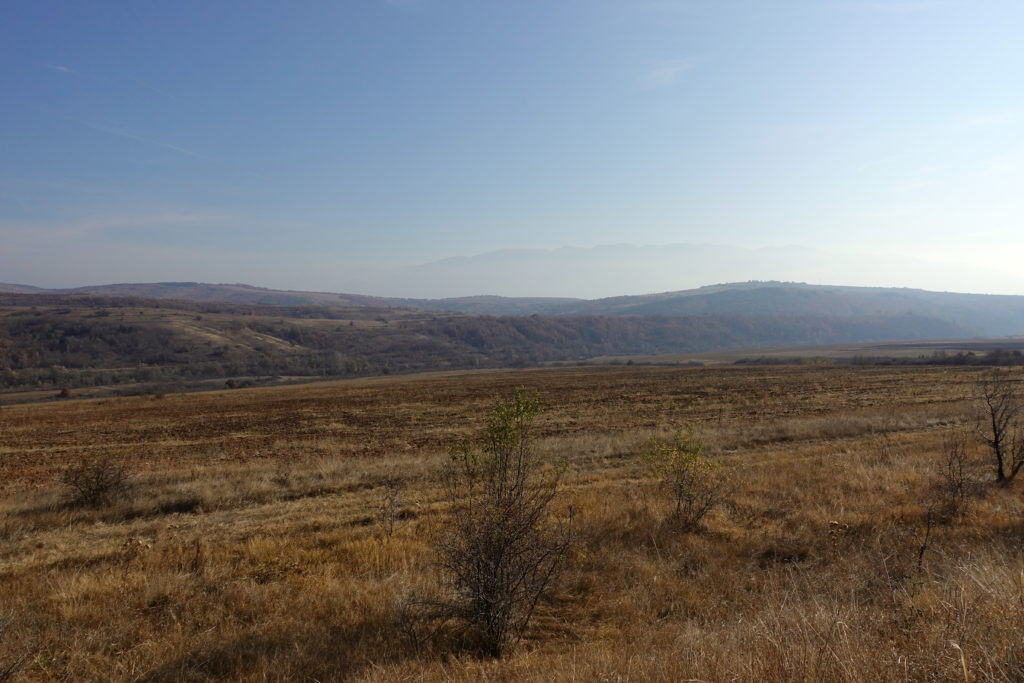
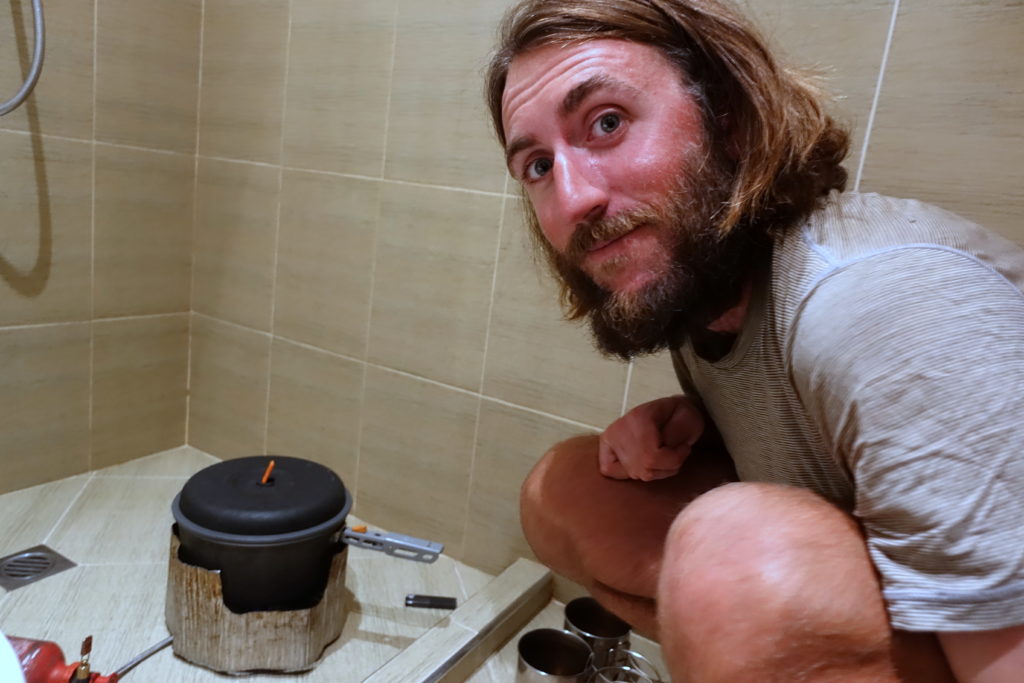
We left the next morning with once again a great weather, although still with chilly minus temperatures in the morning direction our next country: Serbia. To continue avoiding Sofia and its suburbs (and the usual suburban car drivers mess), we chose a few backtrack roads that brought us into more hilly terrain and almost no traffic. We went through a few towns that were obviously not used to see many foreigners, but although not hostile, our interactions with locals felt just ice-cold: people try to avoid any eye-contact, when saying hello people look in the other direction… just weird and definitely not affable. During our few days in Bulgaria, we basically had a few exchanges with some hotel owners willing to develop tourism (but not all of them!), some Bulgarian expats living in Austria or Germany, and basically the rest of the country acting as if they just wanted to avoid us – again: no aggression (unlike New-Zealanders for example) but just icy, and although we do not speak the same language, we did not have that feeling in many other previous countries. Not sure how to explain it – other ex-soviet countries in central Asia were not like that, the other orthodox or Slavic countries around (Serbia, Greece, Croatia) neither.

We kept on going that day until the asphalt simply disappeared and turned into a trail going through the last few towns before reaching a larger valley heading to Serbia – great for cycling relax in the middle of the road, not that much for reaching Serbia before sunset. We set our goal to get lunch in the larger valley connecting Serbia and tried to get lunch there – although here again, although the town of Dragoman had a few thousand inhabitants, the place felt depopulated and the only eateries were questionable, so we ended up quickly eating some remaining snacks on the side of the road. The last 20km to the border were a surprise: the alternative to a large highway turned out to be an (almost) unused cobblestone track, the millennia old Roman road “Via Militaris”. Also, a good Paris-Roubaix training!
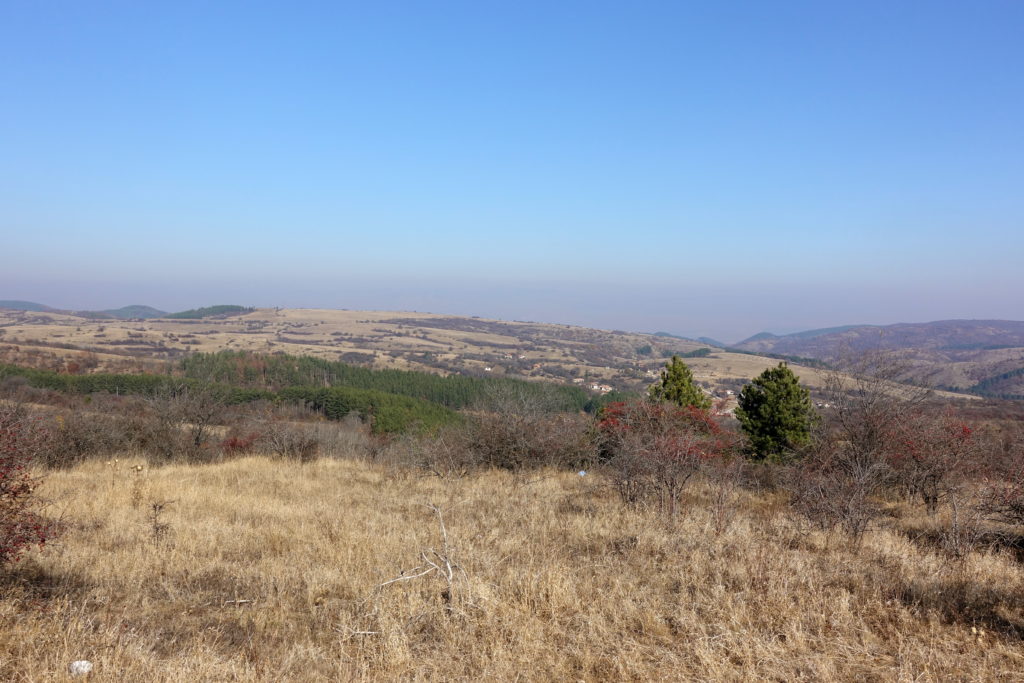
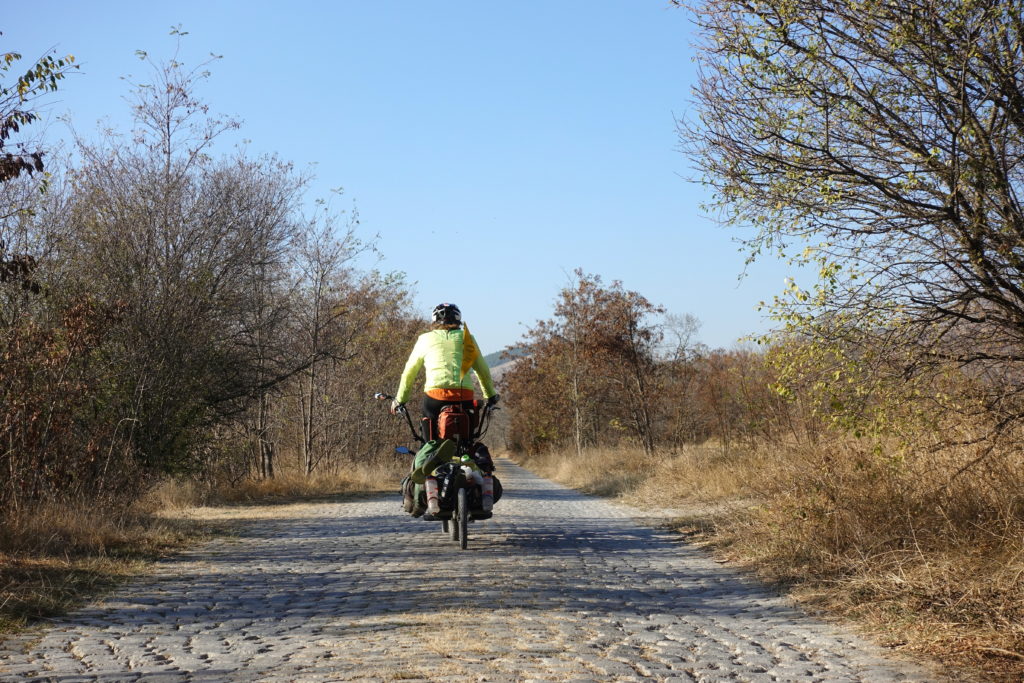
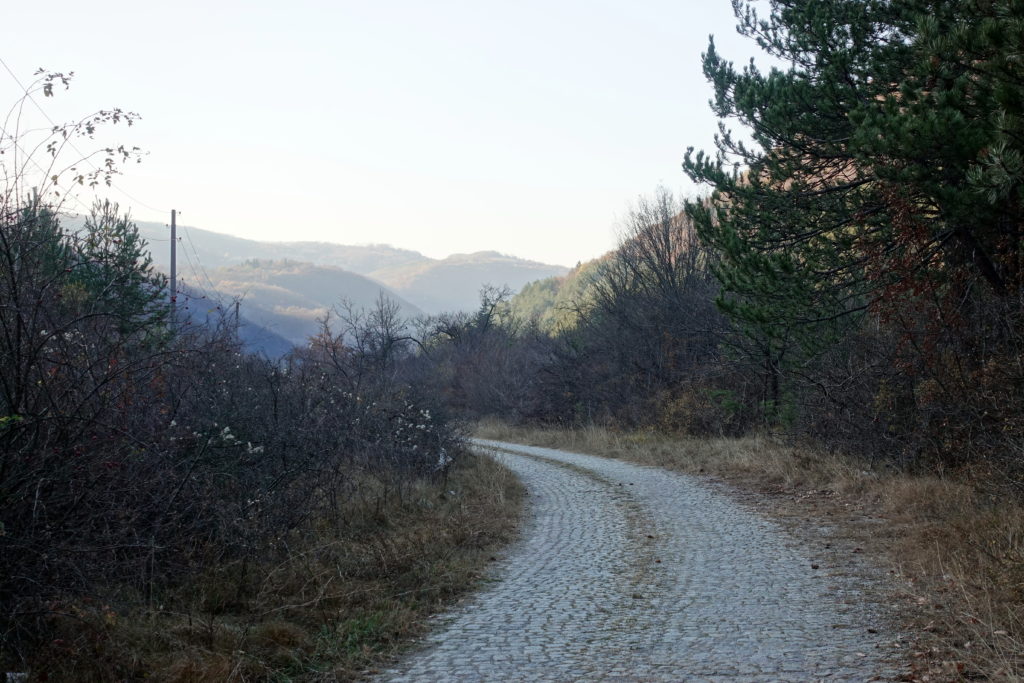
After a sluggish shaking ride on that ancient track, we rejoined the main road right at the border and were surprised to see hundreds of cars queuing before the border. Not excited to possibly have to wait hours, the sunset now behind the mountains and freezing temperatures, we just decided to skip the queue on the highway and bike-pass all cars! We just need to be looking confident enough and make everyone believe that we know what we are doing, and just reemerge into the queue right at the customs barrier. The slight problem, and reason of that traffic jam, was that Bulgarian custom officers had their “shift-change,” lasting over an hour, during which they simply close the border entirely, several times per day, with little enthusiasm to hurry-up. On the other side in Serbia, the border remains constantly open – but they just must wait for the Bulgarian customs to finish their break. We had some Bulgarians living in Vienna explain us the situation, and their tone sounded like our feelings: Bulgaria is a little desperate and better consider your life abroad…
We were now entering in our 16th country this year: Serbia! Here again, a border does not change much geographically, but arriving in Dimitrovgrad we were surprised by the difference with the Bulgarian side. The town was well-arranged, tidy, lively, many shops and businesses along the main street, even some bike lanes and the first signs of the Eurovelo 13, passing through that town. We had been remotely following the Eurovelo 13 route since Edirne in Turkey, but this route exists only on the internet through Turkey, Greece and Bulgaria, as in-project-phase. We were also surprised to see many locals using bicycles around town, and an obvious decreased fanaticism for rusty-German-cars. The only downside was realizing that we changed time zones, so now the sun no longer set at 5pm, but now 4pm. Now that we were in Serbia, our upcoming goal would be heading north and finally reaching the long-awaited Danube River.
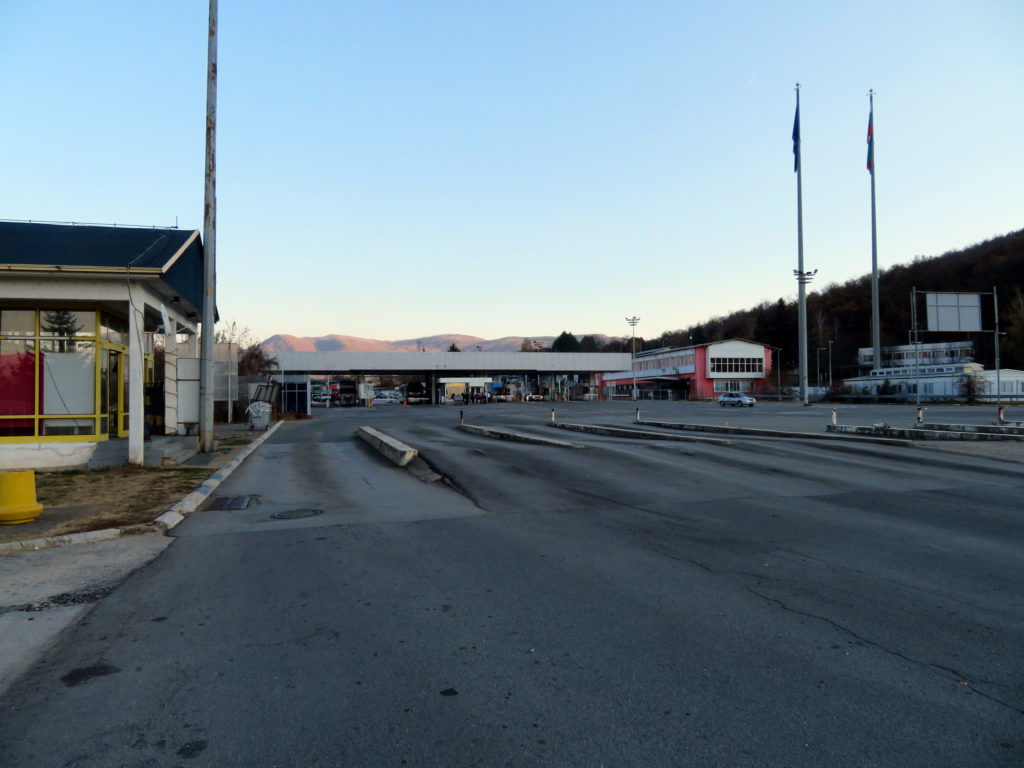
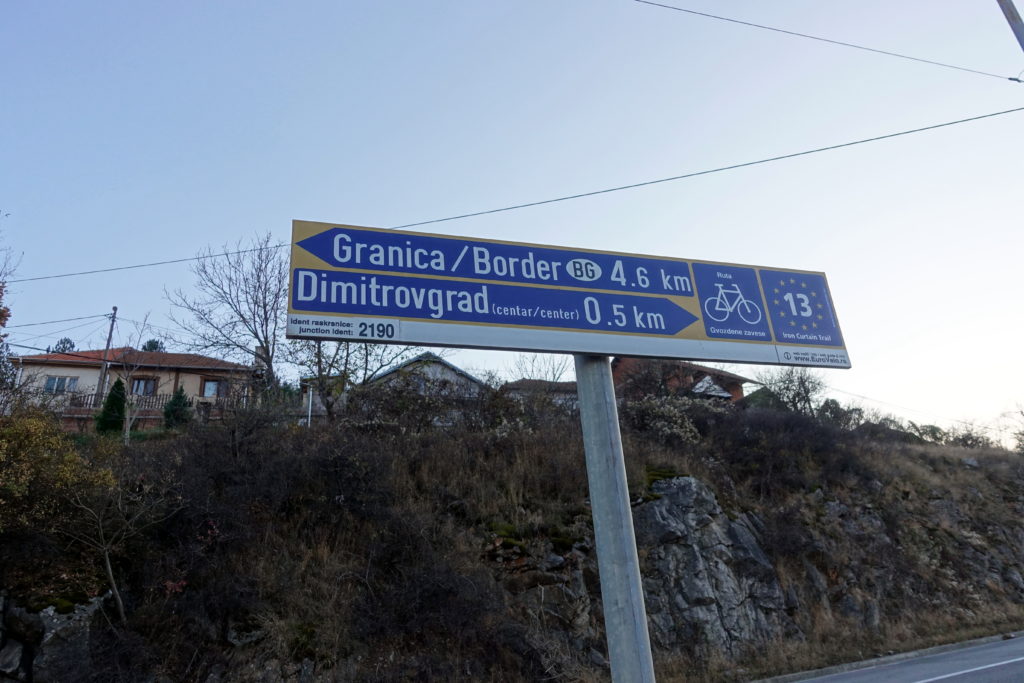
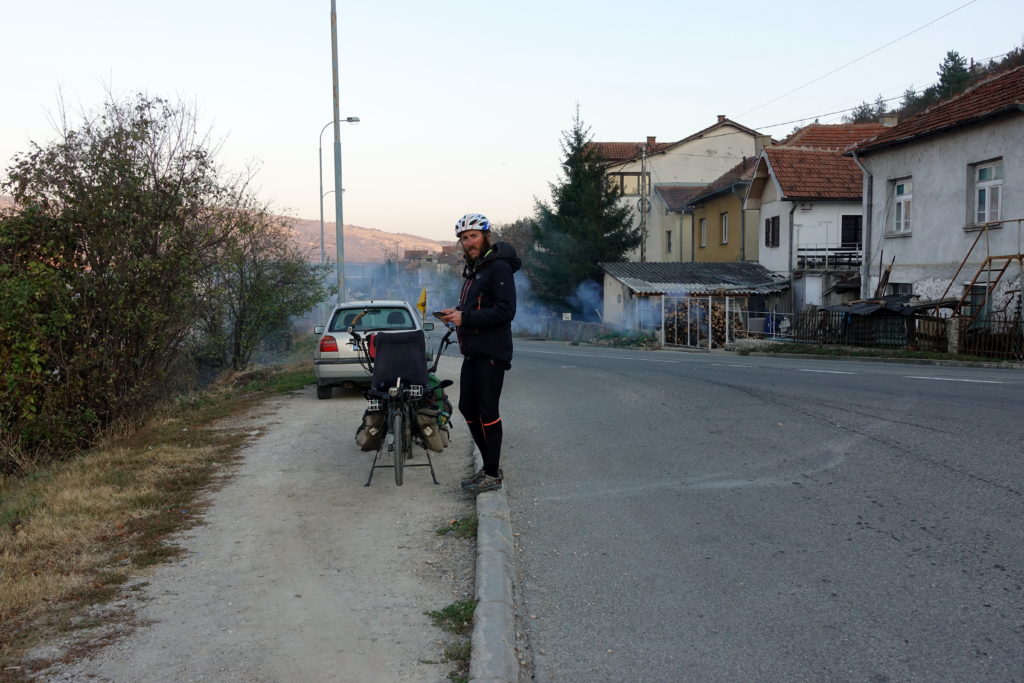
In short, it felt that we sort of blew through Bulgaria. We enjoyed the forested mountains and wilderness in the southern part of the country, although not being a breathtaking landscape the fall season colors made the backcountry pleasant, and the sparse population make secondary roads great for cycling (especially after EU funds financed their refurbishment). There however hasn’t been really any memorable towns or cities that we passed through – just some half-depopulated and half-decaying locations on the map where we could either find an accommodation or groceries. About locals, we just felt that we had spent a week in Bulgaria in a separate universe, no animosity or bad memories, but not many souvenirs either – we were in our bubble and Bulgarians in their own, geographically close, but humanly distant. The first country where we had such feelings, weird.
